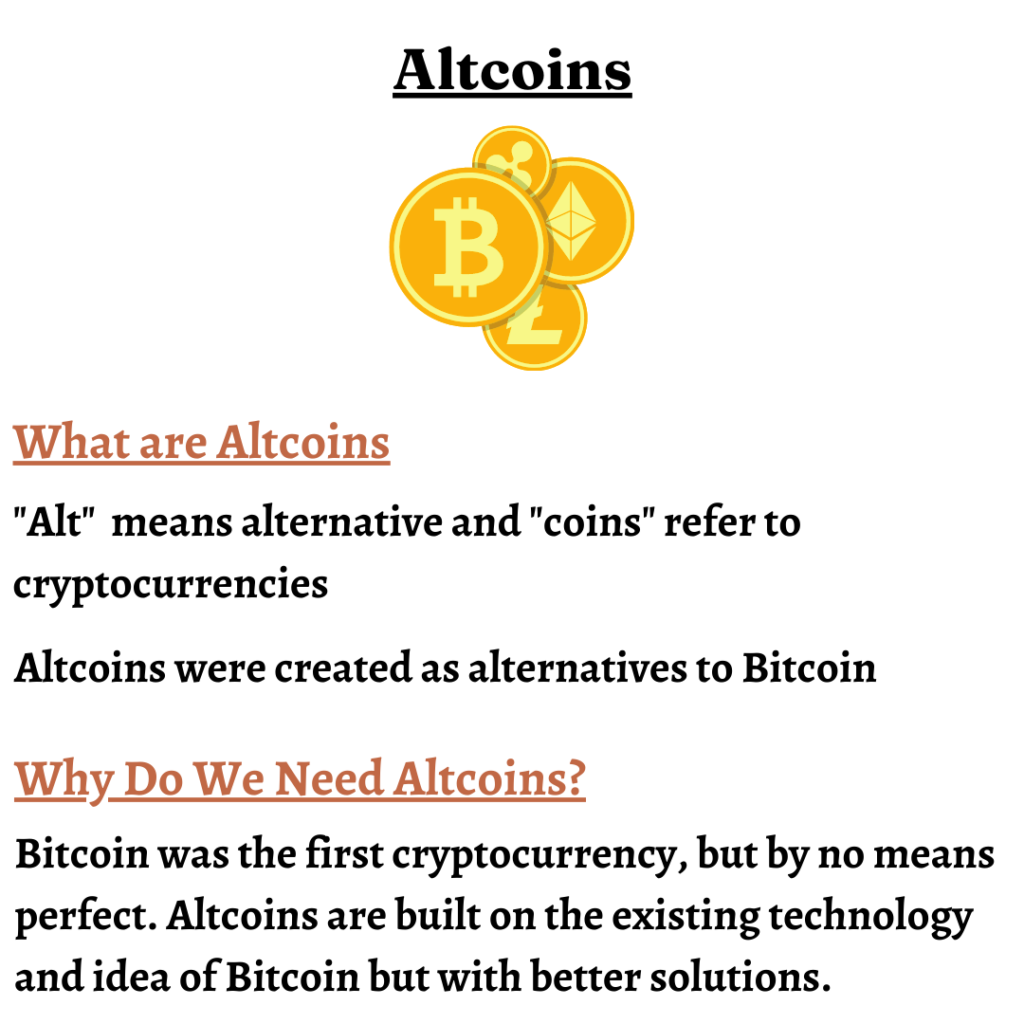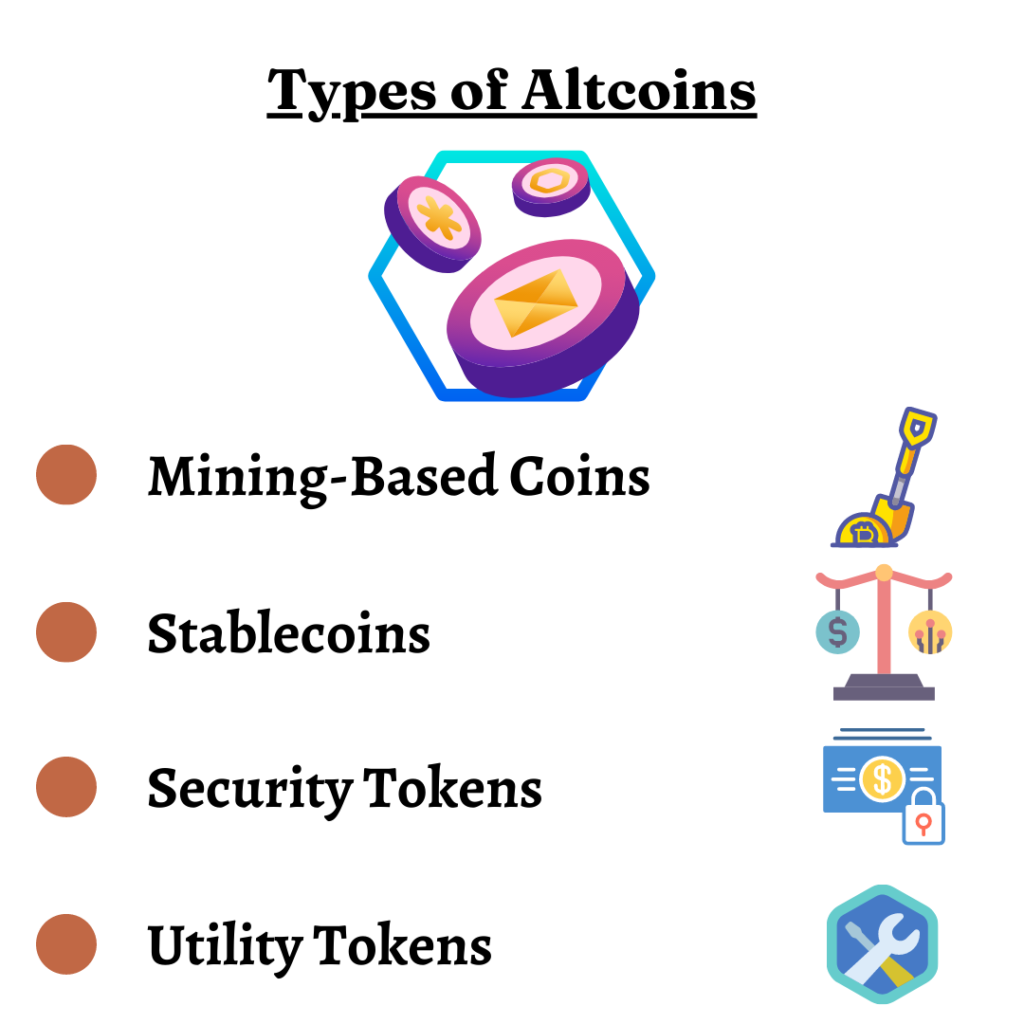The 5 Best Performing Crypto of 2021
When getting started in the world of crypto investing, people are often unaware that cryptocurrency other than Bitcoin exists. We call them altcoins – any cryptocurrency that is not Bitcoin.
Bitcoin could be a great investment, no doubt. But as a crypto investor, if you’re not even considering other altcoins, you’re probably missing out.
In the following list of top altcoins, you’ll find out what the 5 best cryptos of 2021 are, in terms of their market capitalization, what is it that makes them stand out, and are they worth investing in.
Since it’s pretty much common knowledge that Bitcoin and Ethereum are top-performing cryptos right now, with Bitcoin being number one and Ethereum being number two, we will not include these two in the list.
The following are the five best performing cryptocurrencies of 2021 (*as of October):
1) Cardano (ADA)
2) Binance Coin (BNB)
3) Tether (USDT)
4) XRP (XRP)
5) Solana (SOL)
Before we dive into each one of these altcoins, let’s quickly take a look at what altcoins really are and what makes them worth investing in.
Everything You Need to Know About Altcoins (In a Nutshell)

The term “altcoins” is made up of two words – alt, meaning alternative, and coins, referring to cryptocurrency. Altcoins are considered alternatives to Bitcoin, which was the first original cryptocurrency made on a blockchain.
After Bitcoin’s success, many followed its path and blueprint to try and create cryptocurrencies that are not only better but could possibly replace it as well. Hence, they are called altcoins, or alternatives to Bitcoin.
But why do we need altcoins if we already have Bitcoin?
Bitcoin was the first cryptocurrency, and it was revolutionary, but it wasn’t perfect by any means.
Enter altcoins.
Altcoins capitalizes on the drawbacks of Bitcoin by providing better and more efficient solutions. That’s why despite Bitcoin and altcoins having pretty much the same mechanics and functions, they differ in many ways, like the method of mining coins, their functions, price volatility, etc.
Types of Altcoins?

Mainly, there are four types of altcoins – Mining-based coins, Stablecoins, Security tokens, and Utility tokens.
We will quickly go over each one of them.
Mining-Based Coins – Mining-based coins are exactly what it says – coins that are mined into existence. However, unlike Bitcoin, not all altcoins use the Proof-of-Work (PoW) system. For example, the most popular altcoin, Ethereum, is shifting to a Proof-of-Stake (PoS) system, which is much less energy and time-consuming than PoW.
Stablecoins – Most cryptocurrencies, including Bitcoin, are subject to high volatility. Stablecoins aims to solve this problem by pinning its price on commodities like fiat currency, gold, and other cryptocurrencies, which in turn makes its price relatively stable. This allows stablecoins to capitalize on the shortcoming of Bitcoin, which is high volatility and stops it from replacing fiat currency.
Security Tokens – Remember the traditional securities traded in the stock market? Security tokens are basically the digital version of that. It’s a contract for the ownership of a fraction of a coin. These tokens are usually distributed through Initial Coin Offering (ICO), which became very popular back in 2017.
Utility Tokens – Utility tokens are the easiest to explain. Think of gift cards and movie tickets that we use to buy services or rewards. Utility tokens are basically the digital version of that. They are used to pay for services, software, and products within a network.
Should You Invest in Altcoins?
Altcoins aims to offer solutions to problems that otherwise Bitcoin is criticized for. Hence, many investors see value in altcoins. However, whether you should invest in them or not is totally up to you and your goals. Nonetheless, if you DO decide to invest in altcoins, make sure you do your research and avoid going with trends.
Tax Implications of Altcoins
For the past few years, the IRS has been actively going after people that are not reporting their crypto taxes. That’s why it’s becoming more and more important to have conversations around taxation involving different kinds of crypto transactions.
Most altcoins are subject to the same general capital gains tax rate as Bitcoin, Ethereum, and other mainstream cryptocurrencies. But there are instances where things get pretty abstract and confusing due to the lack of guidance by the IRS, like taxes on stablecoins.
However, we have an extremely comprehensive and helpful guide on all the different kinds of taxable events in crypto. Make sure you check it out.
Other than that, the best way to go about filing your taxes is to use the existing laws and their interpretations available to us. It’s even better if you let an expert tax professional do it who has years of experience dealing with this stuff. We have a guide on how to find the right tax professionals to help with your crypto taxes.
Now, back to the list:
Cardano (ADA)
Cardano (ADA) is a third-gen crypto that entered the market in September 2017 and has been one of the top altcoins ever since. The coin was founded by Jeremy Wood and Charles Hoskinson, who previously worked on Ethereum. And much like Ethereum, Cardano also allows smart contracts on its blockchain.
Currently, Cardano has a market capitalization of over 72 billion, and its price stands at $2.25.
Similar to Bitcoin, Cardano also has a limited supply which caps at 45 billion ADA. Limitations are usually imposed to create scarcity so that, in the future, if it does take off in popularity, the scarcity will help increase its demand and price. Right now, there are over 32 billion ADA in circulation.
Cardano uses a Proof-of-Stake (PoS) mining method for a new consensus method called ouroboros. Ouroboros is a highly secure and safe mechanism that allows easy transfer of ADA coins.
But the best part about Cardano that makes it stand out from other mainstream cryptos like Bitcoin and Ethereum is its energy efficiency. According to an estimate, Cardano only uses 6-gigawatt hours per year. To give you an idea how little it is, consider this – Bitcoin is estimated to use 130-gigawatt per year.
On the surface, Cardano seems like a good investment, and it possibly is, but you have to keep in mind that it’s very new and has a long way to go.
Binance Coin (BNB)
Launched in 2017, Binance coin initially started as a utility coin used for paying transaction fees on Binance, a crypto trading platform. But since its launch, it has become much more than that. Now, it’s used for paying for multiple services and expenses on the Binance economy, along with paying for hotels in Trivago or exchanging for other cryptocurrencies, and much more.
Binance Coin, right now, has a market capitalization of 71 billion, and its price stands at $424.88.
Similar to Cardano, Binance coin also has a limited supply of 200 million coins. As of now, there are 168 million BNB in circulation. Binance performs quarterly burns that have helped keep its price relatively stable throughout the years.
Binance Coin is built on Binance’s blockchain called the Binance Chain. Unlike other cryptocurrencies, it doesn’t allow random people to mine BNB. Instead, they choose their own candidates for mining based on several criteria and standards.
Is Binance (BNB) worth investing in?
Although many people are buying BNB for speculative purposes, Binance highly discourages it. According to Binance, BNB is strictly a utility coin, and you should only use it for transactional purposes in the Binance ecosystem.
Tether (USDT)
Tether, a stablecoin tied to the US dollar, was launched in 2014 by a company with the same name, Tether Limited. It’s one of the top altcoins in terms of popularity
The market capitalization of Tether right now is over 68 billion and is priced at $1. Since it’s a stablecoin, its price is supposed to stay constant. Except for a few instances when the price of Tether did fluctuate, it’s mostly fixed at $1.
Just like any other stablecoin, Tether acts as an alternative to fiat currency. You can use it to buy other cryptocurrencies, transfer funds, or save up.
Since stablecoins usually don’t rise in value, Tether is not really an asset to invest in. It’s more of an alternative for fiat currency, as we just discussed. Plus, the company behind Tether, Tether limited, is highly suspicious and dicey. There have been multiple allegations against the company. Many people believe that it could be a scam. So, invest at your own risk.
XRP (XRP)
Founded by Ripple, a digital payment processing company that also has its own blockchain, XRP was launched back in 2012. Although it’s not really a utility token, there are many striking similarities.
The market capitalization of XRP is over 50 billion as of now and is priced at $1.07.
Much like many other cryptocurrencies, XRP also has a maximum supply limit capped at 100 billion. 46 billion, out of which is already in circulation.
Instead of a traditional mining mechanism, XRP uses a consensus mechanism where a group of bank-owned servers confirms transactions to validate blocks.
Although there are no risks or threats of investing in XRP in terms of security and safety, it’s difficult to answer for sure if it’s a good investment or not. Its price didn’t rise as much as other cryptos, given how long it has been around, but that doesn’t mean it’s not a good investment. At the end of the day, you should do your own research and find out if investing in XRP aligns with your goals.
Solana (SOL)
SOL is a native token of a public decentralized blockchain platform with the same name, Solana. It was launched in 2020 alongside the platform itself and has since gained huge popularity making it one of the top altcoins of 2021.
Currently, Solana’s market capitalization stands at 47 billion and is priced at $159.09.
It has a supply limit of 489 million SOL. Currently, 299 million out of which are in circulation.
Solana runs on a hybrid Proof-of-Stake (PoS) and Proof-of-History (PoH) system, the goal being security, accuracy, and transaction speed. This helps SOL stand out from other cryptocurrencies in the market.
Should you invest in Solana?
Unlike many other cryptocurrencies and altcoins, SOL is actually worth taking seriously. Many industry experts believe that SOL has potential, and the fact that it has risen so fast to take the rank in the top ten cryptocurrencies indicates it could be a good investment.
However, we have seen many coins in the past quickly rising in popularity that didn’t last long. An example would be Dogecoin. Not saying that’s what will happen with SOL, but it’s something to keep in mind before investing.
Final Thoughts
Investing is tricky, and crypto is trickier. Any of these top altcoins on this list could be the next big thing, or it could very well be just another passing trend. We’ll never know for sure, and that’s part of the game. Nonetheless, it’s good to be informed and stay up-to-date with industry trends so that when DO you see a real opportunity, you can capitalize on it.